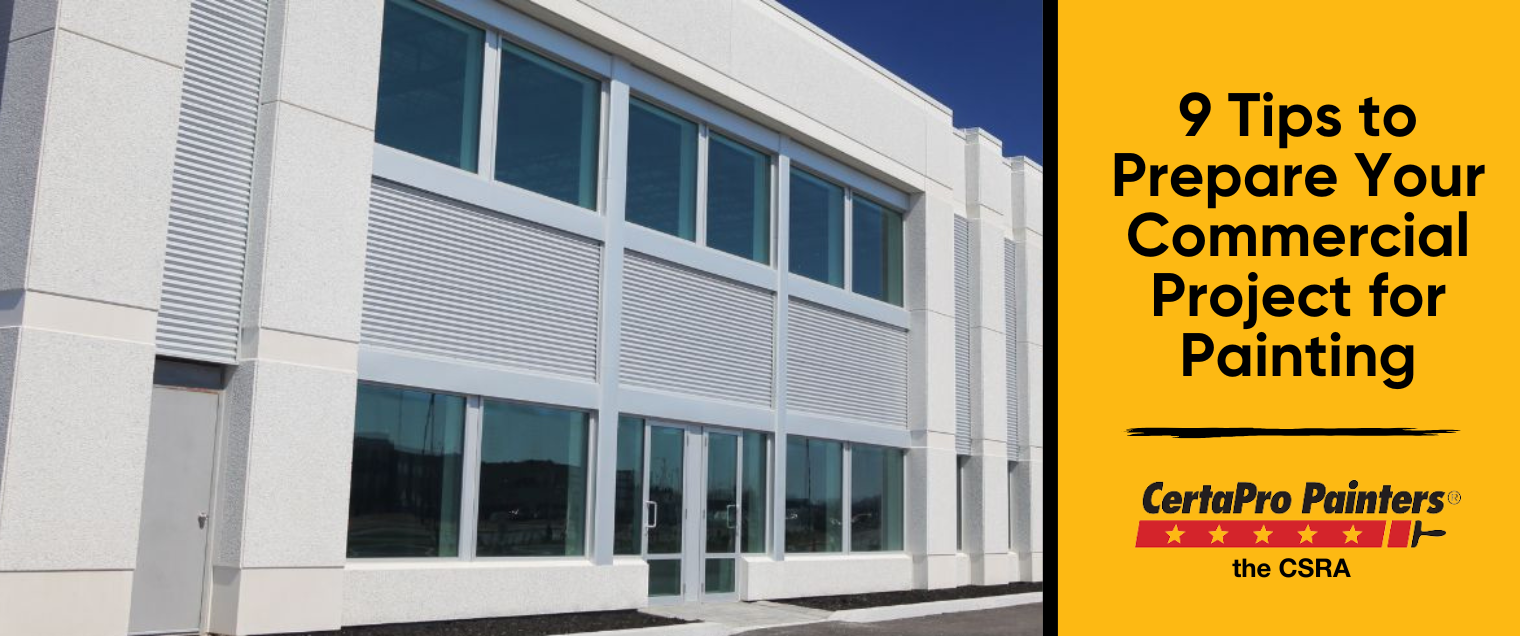
9 Tips to Prepare Your Commercial Project for Painting
Posted on February 14, 2025
When it comes to commercial painting projects, proper preparation is key to ensuring a smooth, efficient process and long-lasting results. Whether you’re refreshing an office, retail space, or large industrial facility, these tips will help you get your property ready for a professional transformation.
Schedule a Walk-Through with Your Painting Contractor
Before the project begins, arrange a detailed walk-through with your painting contractor. This allows both parties to:
- Identify areas that need special attention (e.g., damaged walls, high-traffic zones).
- Discuss color choices, finishes, and any custom requests.
- Establish a clear timeline to minimize disruption to business operations.
Communicate with Your Staff and Tenants
If your commercial property houses employees, tenants, or customers:
- Notify them in advance about the painting schedule.
- Provide clear instructions regarding restricted areas.
- Consider adjusting work hours or operations if necessary to reduce inconvenience.
Clear and Protect Work Areas
To ensure safety and efficiency:
- Remove furniture, equipment, and personal items from the painting area.
- For large items that can’t be moved, cover them with plastic sheeting or drop cloths.
- Secure valuable or sensitive equipment in a different location.
Address Repairs Before Painting
Painting over damaged surfaces can lead to poor results. Make sure to:
- Repair cracks, holes, or water damage in walls and ceilings.
- Ensure that surfaces are clean, dry, and free from grease or dust.
- If extensive repairs are needed, discuss including this in the painting contract.
Plan for Ventilation
Proper ventilation is crucial, especially in occupied buildings:
- Ensure windows can be opened, or plan for ventilation systems to run during and after painting.
- If using low-VOC paints, discuss with your contractor how to minimize fumes and odors.
Secure Necessary Permits (if applicable)
Some commercial properties may require permits for exterior painting, especially in historic districts or regulated areas. Confirm this with your contractor or local municipality.
Discuss Safety Protocols
Ensure your painting contractor follows all safety regulations:
- Ask about fall protection plans for high areas.
- Confirm that crews are trained in handling hazardous materials if applicable.
- Review site safety requirements, especially in active work environments.
Establish a Clear Timeline
Work with your contractor to create a realistic timeline:
- Account for drying times between coats.
- Build in flexibility for weather-related delays, especially for exterior projects.
- Schedule inspections after each phase, if needed.
Final Walk-Through and Inspection
After the project is complete:
- Conduct a final inspection with your contractor.
- Check for missed spots, uneven coverage, or areas that may need touch-ups.
- Ensure the worksite is clean and all equipment has been removed.
Ready to Get started?
Proper preparation ensures your commercial painting project runs smoothly and delivers exceptional results. Contact us today for a consultation and let us help you create a professional, polished space!






